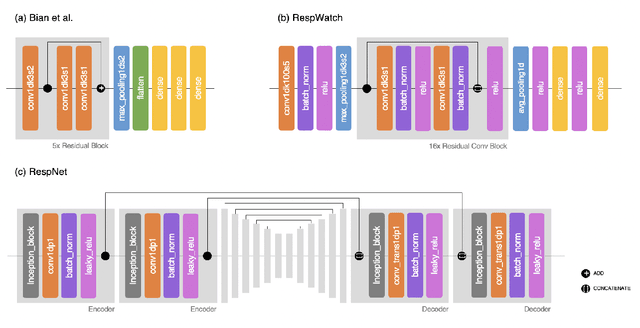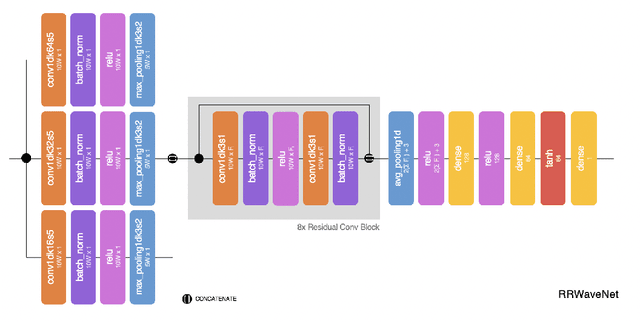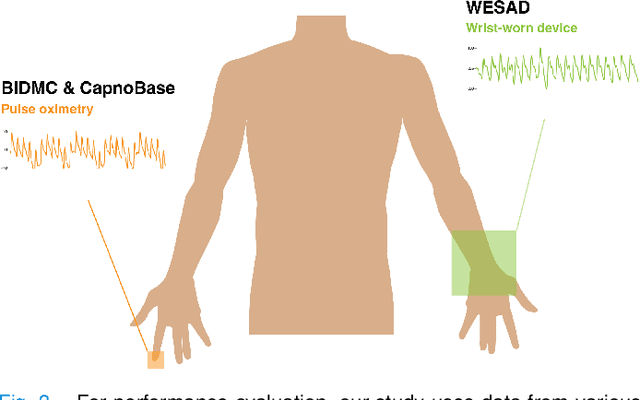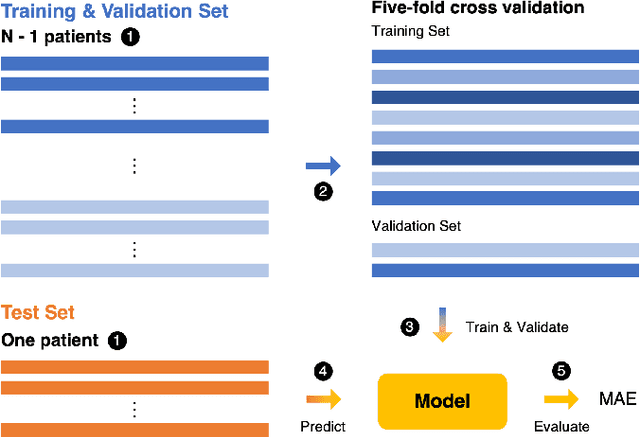Narin Kunaseth
ApSense: Data-driven Algorithm in PPG-based Sleep Apnea Sensing
Jun 19, 2023Abstract:In this paper, we utilized obstructive sleep apnea and cardiovascular disease-related photoplethysmography (PPG) features in constructing the input to deep learning (DL). The features are pulse wave amplitude (PWA), beat-to-beat or RR interval, a derivative of PWA, a derivative of RR interval, systolic phase duration, diastolic phase duration, and pulse area. Then, we develop DL architectures to evaluate the proposed features' usefulness. Eventually, we demonstrate that in human-machine settings where the medical staff only needs to label 20% of the PPG recording length, our proposed features with the developed DL architectures achieve 79.95% and 73.81% recognition accuracy in MESA and HeartBEAT datasets. This simplifies the labelling task of the medical staff during the sleep test yet provides accurate apnea event recognition.
RRWaveNet: A Compact End-to-End Multi-Scale Residual CNN for Robust PPG Respiratory Rate Estimation
Aug 18, 2022



Abstract:Respiratory rate (RR) is an important biomarker as RR changes can reflect severe medical events such as heart disease, lung disease, and sleep disorders. Unfortunately, however, standard manual RR counting is prone to human error and cannot be performed continuously. This study proposes a method for continuously estimating RR, RRWaveNet. The method is a compact end-to-end deep learning model which does not require feature engineering and can use low-cost raw photoplethysmography (PPG) as input signal. RRWaveNet was tested subject-independently and compared to baseline in three datasets (BIDMC, CapnoBase, and WESAD) and using three window sizes (16, 32, and 64 seconds). RRWaveNet outperformed current state-of-the-art methods with mean absolute errors at optimal window size of 1.66 \pm 1.01, 1.59 \pm 1.08, and 1.92 \pm 0.96 breaths per minute for each dataset. In remote monitoring settings, such as in the WESAD dataset, we apply transfer learning to two other ICU datasets, reducing the MAE to 1.52 \pm 0.50 breaths per minute, showing this model allows accurate and practical estimation of RR on affordable and wearable devices. Our study shows feasibility of remote RR monitoring in the context of telemedicine and at home.
 Add to Chrome
Add to Chrome Add to Firefox
Add to Firefox Add to Edge
Add to Edge